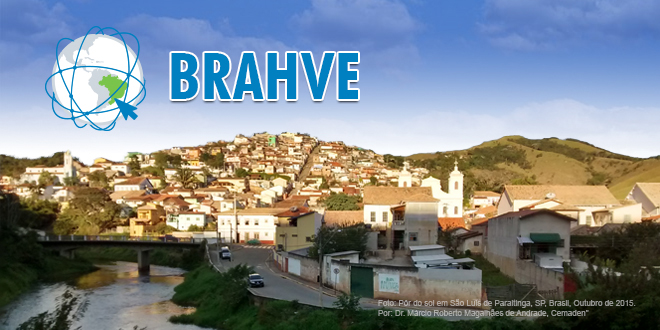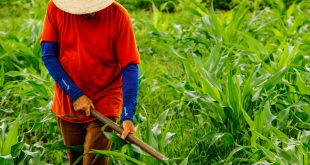The BRAHVE Workshop will take place from June 6th to 8th 2017. We aim to gather renowned scientists, from Brazil and the world, researching threats, vulnerabilities and disaster risk management. Among them, we have confirmed the following international guests: Mr. Allan Lavell (Facultad Latinoamericana de Ciencias Sociales -FLACSO – Costa Rica); Mr. Ben Wisner (University College London, United Kingdom); Mr. Santiago Uribe (Medellin City Hall, Colombia); and Professor Andrés Velásquez (Corposso – Colombia). Workshop registration will remain open until April 30th. The schedule contemplates roundtables in the mornings, and speeches and work groups in the afternoons. The following is a detailed preliminary schedule:
1) Research in Disaster Risk and Indicators of Risk;
2) Sendai Framework 2015 – 2030;
3) Training in Disaster Databases. The workshop also aims to foster research partnerships with foreign groups to study disaster risk in Brazil, as well as create capabilities for disaster database development.
THEMES & OBJECTIVES
THEME 1. RESEARCH AND RISK INDICATORS
The goal of this topic is to debate the knowledge challenges of disaster risk management in Brazil, especially the directives to prepare the conceptual framework for this topic in the country, in the context of the national response strategy to Sendai 2015-2030 commitments.
Specific Goals:
- Question and encourage the debate on disaster risk management, from a holistic interdisciplinary perspective that integrates contributions from all sectors of knowledge and society;
- Evaluate the current methodologies in place in Brazil to gather, systematize, and make available disaster data, as well as strategies and methodologies to develop risk indicators;
- Stimulate the discussion on the underlying causes of disasters, to assist the creation of a conceptual framework for planning sustainable territories, one that includes effective strategies to integrate participation from all sectors of society;
- Foster discussion about communication strategies between academia and other sectors of society, aiming to facilitate the acceptance of the concept of acceptable risk, to be incorporated into a basis for planning disaster risk management strategies on all scales; and
- Evaluate the strategies of the educational sector in disseminating, integrating and appropriating knowledge on disaster risk in schools and universities throughout the country.
THEME 2. SENDAI FRAMEWORK
The goal of this topic is to discuss the main aspects of the targets and priorities of Sendai Framework 2015 – 2030, as well as the research sector’s strategies to reach them, with the governmental sector.
Specific Goals:
- Discuss the results of the Regional (Montreal) and Global (Cancun) platforms for Disaster Risk Reduction and the next steps needed to implement the Brazilian strategy;
- Discuss the challenges to consolidate an integrated approach to managing risks and disasters in the Brazilian context;
- Generate proposals to subsidize improvements to the National Plan for Risk and Disaster Management.
THEME 3. TRAINING IN DISASTER DATABASES
In Sendai, on April 2015, the 187 signatory states committed themselves to developing risk indicators and national disaster databases with local resolution. New databases are expected to be created and made available in the following years, and for older databases, maintenance and updating strategies should be planned. Therefore, the goal of this topic is to establish a national corporation network, with representatives from different social sectors, for the elaboration, updating and analysis of disaster databases, to subsidize research and development of risk indicators in Brazil.
Specific Goals:
- Discuss with national and international specialists the premises for disaster database creation in Brazil;
- Promote training for systematization of disaster data;
- Encourage the discussion about relevant disaster databases to support research on threats, vulnerabilities and risks; and
- Discuss priorities associated with data collection on local occurrences, at municipal level: document losses at this scale (detailed), with the purpose of contributing to the development of disaster risk indicators on all levels.
SPECIAL SESSION “Science, Risks and Disasters – Call for Scientific Papers (limited vacancy)
BRAHVE participants will have the opportunity to share their research papers as an oral presentation and/or poster exhibit. The abstracts, each up to 200 words, should be sent to the evaluating committee until May 10th, through the link. For inquiries, please contact: workshop.brahve@gmail.com
Results of the chosen papers will be disclosed by May 15th. The lines of research for this session include:
Social-Environmental Threats and Vulnerabilities in Brazil;
- Methods and/or Models for Evaluating Disaster Risks and Impacts;
- Planning, Managing and Governing Risks;
- Education and Communication for Disaster Risk Prevention.
Guidelines for oral presentation:
Selected participants will have 10 minutes to present the results of their work. A data projector will be available.
Guidelines for posters:
- Dimensions: 90cm (width) x 120cm (height )
- Readability and Resources: the poster font should be readable from a distance of at least two meters. Use the resources at your disposal to make a poster that draws attention.
It is not mandatory to plotter print (it can be printed on vinyl or paper). However, it should have a string on the top side for fixation.
The poster should have :
– A title identical to the title of the abstract submitted.
– Names of all the authors (the same authors as in the abstract submitted) and institutions.
– Research data: introduction, methodology, results and conclusions. Use minimal amount of text and maximum amount of illustrations, tables and graphs, if possible.
– Grant/sponsor Institution: inform the name, if applicable.
 Cemaden Centro Nacional de Monitoramento e Alertas de Desastres Naturais
Cemaden Centro Nacional de Monitoramento e Alertas de Desastres Naturais



